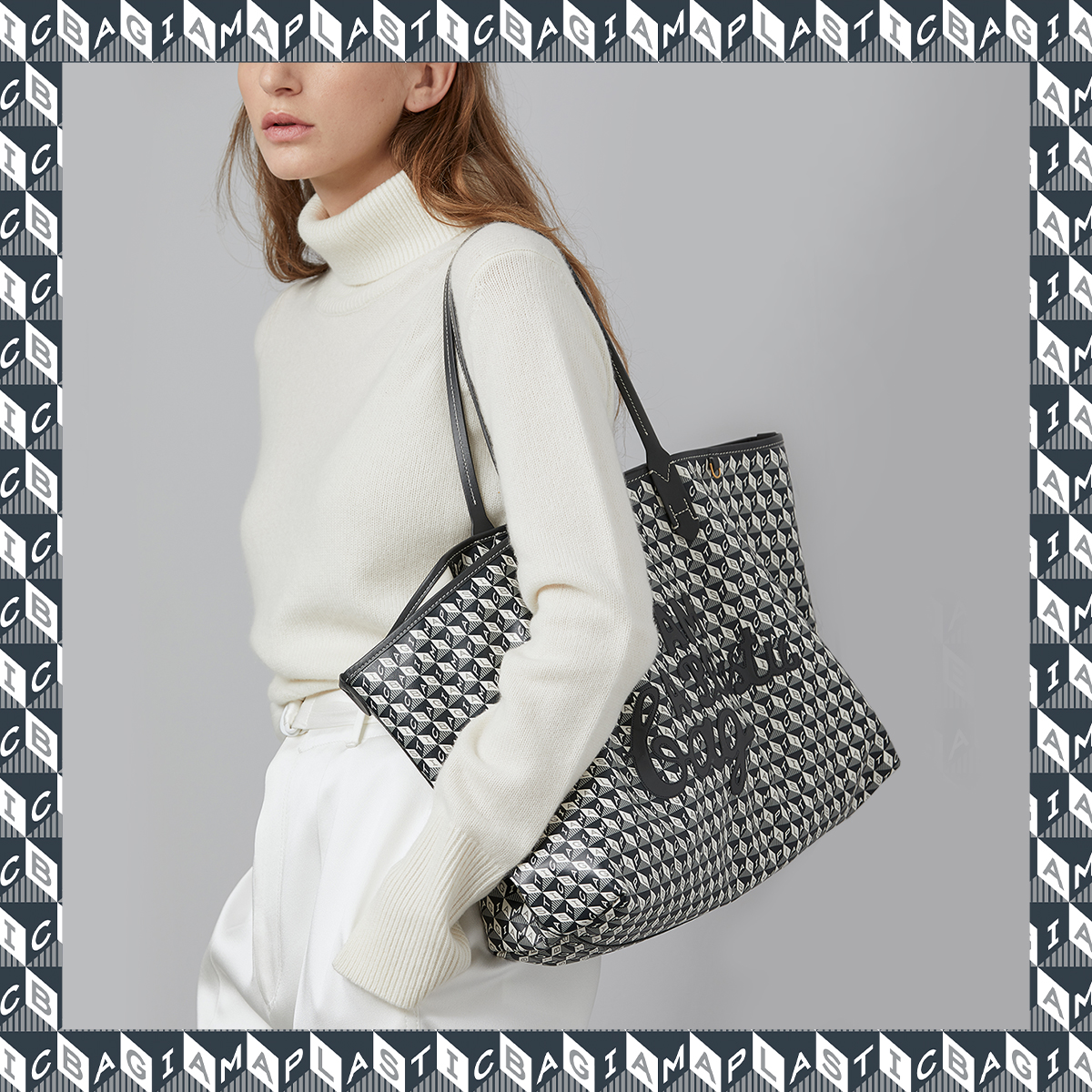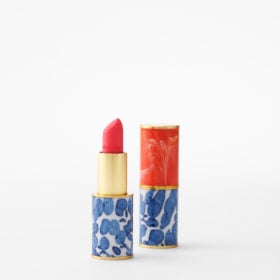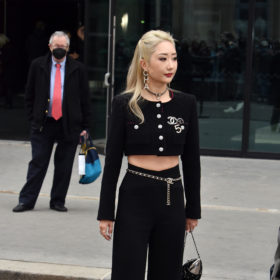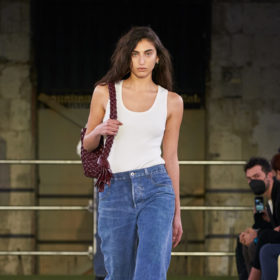
December 23, 2020 at 06:14PM
As the chair of fashion at Ryerson University, advocate and educator Ben Barry has tirelessly championed a more conscious and inclusive approach within the modern fashion world. So, it’s not surprising that Barry announced last week that starting next fall, he would become the dean of fashion at The New School within New York’s Parsons School of Design.
While he will certainly be missed by Canadian creatives and others who have watched him help to transform our local fashion education system – including the hiring of thought-leaders like Fashion and Race Database founder Kimberly Jenkins, who joined Ryerson’s faculty earlier this year – Barry assures us that this new post will simply be an expansion and augmentation of the work he’s done in the style space so far.
“First and foremost, I’m excited to scale and amplify the work for radical inclusion in fashion,” Barry says. “That’s work that’s begun in Canada [and] that Canadian academics, creatives and designers are leading internationally. Now I’m able to bring all this experience and perspective to a platform like Parsons, which can only amplify that globally…. I think as Canadians, we’re so humble we don’t often realize that the world looks to Canada as doing exciting, progressive work in so many fields, including fashion. But they do.”
We naturally wanted to know Barry’s fashion predictions heading into 2021, and from how we shop to what we’ll be buying, he had plenty of interesting ideas.
I’m sure you’ve seen a lot of change this year, as we all have. Let’s talk about what you’re thinking about moving into 2021.
ADVERTISEMENT
ADVERTISEMENTKate Spade Autumn/Winter Sale |
We’ve seen the growth of Zoom-wear, and I think we’re going to see a movement to high-glam Zoom-wear. At this point in the pandemic, people want to experiment with new ways of pulling looks together to unleash our creativity and to uplift our spirits. I’m imagining that there’s going to be an increase in terms of design concepts and aesthetics – thinking of really big shoulders, bold colours, embellishments and sparkles around the neck and shoulders. Details that give people the pure joy in dressing up. I think we’ll still be wearing pajamas and lounge pants on the bottom – I don’t think that will change, I think we love that. But the top is going to be less about hoodies and more about high glamour.
View this post on Instagram
I think you’re totally right, because this virtual world isn’t just a stop-gap – it’s how we live now. People will still be working a lot from home moving forward, even as things will start to open back up.
Totally. I think post-pandemic, whatever that means, it’s clear there will be a new hybrid format for work, and for life in general. So, in many ways, how we think about clothes and how they are designed will be about navigating those spaces. I do think people will want to enjoy the energy in wearing clothes again moving into the new year.
Agreed! I leaned fully into leisurewear for much of the year, but now I want to start making more of an effort.
I think there’s also a consciousness of how clothing and proportions appear on [virtual platforms] and there’s a mindfulness from a consumer perspective and a designer perspective in terms of how something looks on Zoom. What takes up the frame and achieves the silhouette I want? That’s a different way of designing and thinking about clothing than when it’s a full look.
Definitely. What else is going to shift in the coming months?
There’s going to be what I’m going to call a ‘centering’ of knowledge and experiences from disability communities. And what I mean is that with continued social distancing measures, the fashion industry is moving towards this remote work environment. There are many questions in the industry right now: How do you design? How do you develop new products? How do you buy products remotely? Even, how can one ‘hack’ clothing or modify it to fit their body? One of the things that’s come out of the pandemic is that there’s been this honouring of the fact that disabled people and disability communities have long been experts on how to hack a world that hasn’t been designed for them; and, how they develop community and work remotely, which is a reality for many people in disability communities.
At the beginning of the pandemic there was this sense that we need to reinvent the wheel, without the recognition that this knowledge already exists for many people. As we continue to move forward in this world and think about all these things, there’s going to be increased efforts in collaboration with and credit to crip and disability communities who have been working in these ways their whole lives.
View this post on Instagram
These are very encouraging predictions….
You have to have a balance between fun ones and serious ones! Let’s go to another fun one: An increased importance of the sensuality of fabric and fit. We are sitting in our bodies and feeling our bodies like never before, because we’re not moving about the world in the same way. Pre-pandemic, the focus was on how clothes look: How do they look for Instagram? How do they look in the world? Fit and fabric was important, but it wasn’t the centre of attention. The idea of clothing as a second skin has taken on increased importance now. So, there’s almost a deeper focus on how we feel in our clothes, and how they feel on us – not just on how they look on us.
ADVERTISEMENT
ADVERTISEMENTSports Direct Free Delivery on All Orders! |
It’s interesting that you brought that up, because I recently bought a pair of pants that had an elasticized waist that I thought would work well for wearing right now in terms of coziness, but the fabric was a wool that was very heavy and scratchy. I could’ve worn them to fashion week, but for being at home, I couldn’t conceive of wearing them and being comfortable. Fabrication is so important! Speaking of which, much of what we’ve seen in terms of fashion, even before the pandemic, was about what’s on a screen….
Totally. I think about before, when I would check my outfit in a full-length mirror before going out, and it was much less about, ‘How does this fabric feel on my body?’ It was that I loved the proportions, that the way it was going to move would be amazing…. That’s what brought me so much joy; it was about the aesthetic versus the tactile nature of a piece.
Yes, I feel like this is something we don’t talk enough about; I’m missing seeing fabrics up close at a showroom or a fashion show – seeing the texture, feeling the weight, seeing how it plays against the light. That’s such a good prediction to watch unfold. What else will we be talking about going forward?
This isn’t a shock for me to say, but there’s going to be a continued demand towards radical inclusion in fashion. We’ve seen deep systemic inequities come to light in the past year, particularly around anti-Black racism in fashion and around racial injustice. As we move into the new year, both the industry and customers are going to be holding the fashion world accountable for their statements on Black Lives Matter and their commitments to do better. There’s going to be increased accountability in that – like, you made these statements over the summer and we now want to see how you’ve acted on them. And the brands that will succeed will be the ones that can show that their words were not merely performative, but that they have been working to make deep changes and are transparent about what those changes have been.
The other part of this that I’m seeing is a continued growth in parallel fashion industries that exist in addition to the big-F, mainstream fashion system. These are smaller communities, fashion weeks and organizations that bring people together who have been excluded and marginalized from capital-F fashion, and who don’t feel a part of that. These parallel fashion systems will flourish; there’s both support in the mainstream industry to cover them, to support them, and to look towards them and there’s also consumer demand to see all of this work that exists, and has existed, outside of this singular, monolithic system. We’ve seen it with Indigenous Fashion Week Toronto, which was a massive event this year. It’s doing fashion on its own terms, and it was covered by so many mainstream media outlets and there was huge consumer support – the marketplace sold out in an hour. It was so popular.
View this post on Instagram
Speaking of fashion weeks, I wanted to ask you specifically what you think will happen to the shows next year, especially given all the digital strategies we’ve seen revealed?
That’s the question, right? My prediction is that moving forward, fashion weeks will become hybrid. I think there will always be the desire for an in-person fashion show. Maybe not as the dominant or only model, but there’s something about the materiality and the performance that will always require some kind of in-person event. But the fashion community knows what digital can do – particularly what happens when a digital [presentation] becomes a performance, when you incorporate music and lighting and choreography.
Ideally, a fashion show doesn’t only show clothes, it’s a narrative about the collection. It leaves viewers with a feeling. The best digital platforms will be able to show the details and movement and structure of clothes while also telling a story and leaving viewers with emotion. It’s being figured out, and it will only happen with significant collaboration between fashion and other creative industries. But digital will always leave the materiality out, and we can’t ignore that that’s so much a part of what fashion is.
It’s true. I’ve thought a lot about what digitization will lend to the democratization of fashion in terms of accessibility, which is so important – but I’d be lying if I said I didn’t want to see another Simone Rocha runway show IRL, too. And I rely so much on fashion events, including student shows, as an opportunity to discover both local and global emerging talent. Yes, there’s the drama and beauty of big-scale shows, but there’s also the programming happening adjacently or in addition to them that puts people on my radar. For example, Mass Exodus is really how I found out about Mic. Carter. Fashion shows are a space where you can be exposed to a lot of creative ideas, and creators, at once.
Definitely. Whatever form a fashion event takes place as, there is that importance of inviting press, buyers and others in the industry into a space where they can meet emerging designers. We have to de-centre the requirement of having a huge budget to show at one of the four major fashion weeks, and also the perceived requirement of having to live in one of those cities. And we have to de-centre the North American-European nexus of fashion so that designers from all over the world can create something, like a video, that could attract the attention of people everywhere.
You’ve given me so much to think about during this chat. Any final predictions before we say goodbye?
ADVERTISEMENT

ADVERTISEMENT
Anya Hindmarch - I AM A PLASTIC BAGYes – that there will continue to be an increased desire and understanding to support local and community design. We’ve seen so many small businesses close and struggle across industries, but I think it’s raised consciousness about the concepts of: Who made my clothes and accessories? How were they made? Where were they made? Where are the materials from? What are the stories behind them? We’ve seen our neighbours struggle with their businesses, and people want to help however they can.
The post Fashion Predictions For 2021 (and Beyond) From Canadian Educator And Activist Ben Barry appeared first on FASHION Magazine.
Read More Fashion News
Author Odessa Paloma Parker | Fashion Magazine
Selected by CWC
ADVERTISEMENT
ADVERTISEMENTUp to 30% off Gift Sets |






